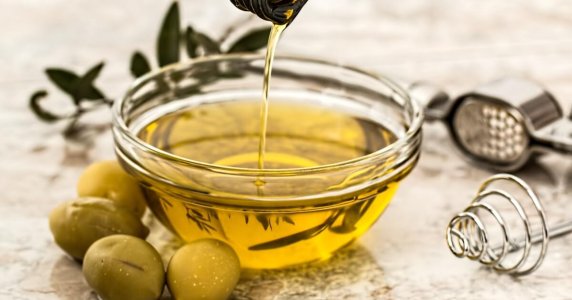Shocking price hike for this EVERYDAY pantry essential due to European heatwave
- Replies 13
These days it seems the cost of essential items is increasing constantly.
And now, Australians are being warned about a massive price hike for one popular pantry product—courtesy of heatwaves in Europe.
It’s an item many of us use as the base ingredient for much of our cooking. We’re talking about olive oil, of course.
Popular holiday destinations such as Spain, Italy, and Greece have been sweltering, with temperatures tipping over 40°C.
These soaring temps, accompanied by prolonged dry spells, have affected the supply of olives, directly hitting some of the world's most prominent olive oil producers.
As Michael Southan, Chief Executive of the Australian Olive Association, told reporters, about half of all olive oil savoured in Australia is imported.
‘We don't produce enough to meet domestic consumption; we're roughly producing half of what we consume,’ he said.
‘We are seeing world record prices because of the northern hemisphere drought, and there is a shortage of olive oil coming out of the big producing countries.’
‘[The price] won't be too far out of alignment with what we're seeing across the board,’ Southan continued.
Back in April, due to droughts in Spain, the price of olive oil surged to the highest point in 26 years.
The International Monetary Fund recorded a new peak price of US$6,269.63 (AU$9536.87) per metric ton at the end of April this year, surpassing the previous record price of US$6,241.91 (AU$9494.70) that was set in December 1996.
Closer to home, Cobram Estate, Australia's leading olive oil producer, revealed a lower-than-expected yield in their July harvest report.
Although projected to produce between 12.6 and 13.2 million litres, the company instead produced 12.5 million litres.
In a statement shared with their shareholders, Cobram Estate said: ‘The lower than expected crop has been driven by the unusually cold and shorter growing season delivering lower-than-average oil content in the fruit, combined with smaller-than-normal fruit size.’
They added that the quality of the oil was ‘excellent’ and emphasised that there was plenty of supply to ‘meet the requirements of its packaged goods sales plan over the next 12 months’.
In reality, olive oil prices on our grocery shelves are already on the rise. When buying in July 2022, a 4-litre Moro Extra Virgin Olive Oil could cost you $36, but now? All the way up to $43–even after a Woolworths’recent ‘price drop’–that's a jump of almost 20 per cent.
Woolworths’ own brand of 100% Spanish Extra Virgin olive oil costs 71 per cent more now than it did in December 2021, with an increase from $7 to $12.
Meanwhile, Coles' in-house 500 ml Extra Virgin Olive Oil saw a price spike of 60 per cent. Cobram Estate olive oils remained at the same price.
So, if you enjoy a sprinkle or two of olive oil on your dinner, make sure to get what you need before the price rises start to appear on store shelves.
But olive oil is not the only victim of Europe's scorching heat. Experts believe it's an alarming indication of our potentially sizzling summer ahead.
This could mark the first El Nino in three years, promising blistering heatwaves hotter than ever before.
Emma Bacon, Executive Director of Sweltering Cities, warned: ‘Regardless of whether we have El Nino or not this year, the heat we're going to experience in coming summers will be worse than any we've felt before due to climate change.’
‘They will be the hottest summers of our lives.’
 If you have any tips to share about getting the best value for your groceries, please let us know in the comments below!
If you have any tips to share about getting the best value for your groceries, please let us know in the comments below!
And now, Australians are being warned about a massive price hike for one popular pantry product—courtesy of heatwaves in Europe.
It’s an item many of us use as the base ingredient for much of our cooking. We’re talking about olive oil, of course.
Popular holiday destinations such as Spain, Italy, and Greece have been sweltering, with temperatures tipping over 40°C.
These soaring temps, accompanied by prolonged dry spells, have affected the supply of olives, directly hitting some of the world's most prominent olive oil producers.
As Michael Southan, Chief Executive of the Australian Olive Association, told reporters, about half of all olive oil savoured in Australia is imported.
‘We don't produce enough to meet domestic consumption; we're roughly producing half of what we consume,’ he said.
‘We are seeing world record prices because of the northern hemisphere drought, and there is a shortage of olive oil coming out of the big producing countries.’
‘[The price] won't be too far out of alignment with what we're seeing across the board,’ Southan continued.
Back in April, due to droughts in Spain, the price of olive oil surged to the highest point in 26 years.
The International Monetary Fund recorded a new peak price of US$6,269.63 (AU$9536.87) per metric ton at the end of April this year, surpassing the previous record price of US$6,241.91 (AU$9494.70) that was set in December 1996.
Closer to home, Cobram Estate, Australia's leading olive oil producer, revealed a lower-than-expected yield in their July harvest report.
Although projected to produce between 12.6 and 13.2 million litres, the company instead produced 12.5 million litres.
In a statement shared with their shareholders, Cobram Estate said: ‘The lower than expected crop has been driven by the unusually cold and shorter growing season delivering lower-than-average oil content in the fruit, combined with smaller-than-normal fruit size.’
They added that the quality of the oil was ‘excellent’ and emphasised that there was plenty of supply to ‘meet the requirements of its packaged goods sales plan over the next 12 months’.
In reality, olive oil prices on our grocery shelves are already on the rise. When buying in July 2022, a 4-litre Moro Extra Virgin Olive Oil could cost you $36, but now? All the way up to $43–even after a Woolworths’recent ‘price drop’–that's a jump of almost 20 per cent.
Woolworths’ own brand of 100% Spanish Extra Virgin olive oil costs 71 per cent more now than it did in December 2021, with an increase from $7 to $12.
Meanwhile, Coles' in-house 500 ml Extra Virgin Olive Oil saw a price spike of 60 per cent. Cobram Estate olive oils remained at the same price.
So, if you enjoy a sprinkle or two of olive oil on your dinner, make sure to get what you need before the price rises start to appear on store shelves.
But olive oil is not the only victim of Europe's scorching heat. Experts believe it's an alarming indication of our potentially sizzling summer ahead.
This could mark the first El Nino in three years, promising blistering heatwaves hotter than ever before.
Emma Bacon, Executive Director of Sweltering Cities, warned: ‘Regardless of whether we have El Nino or not this year, the heat we're going to experience in coming summers will be worse than any we've felt before due to climate change.’
‘They will be the hottest summers of our lives.’
Key Takeaways
- Australia is set to see a price increase for olive oil due to European heatwaves impacting olive supplies and a 'cold and short' growing season at home.
- Half of Australia's olive oil is imported, with the nation's largest producer, Cobram Estate, recording lower-than-anticipated harvest results this year.
- Olive oil prices have already seen considerable rises, with some products increasing by more than 70 per cent in the past two years on Australian supermarket shelves.
- Extreme global heatwaves, potentially leading to an El Nino in Australia, are a serious concern, with predictions that coming summers could be hotter than ever due to climate change.









